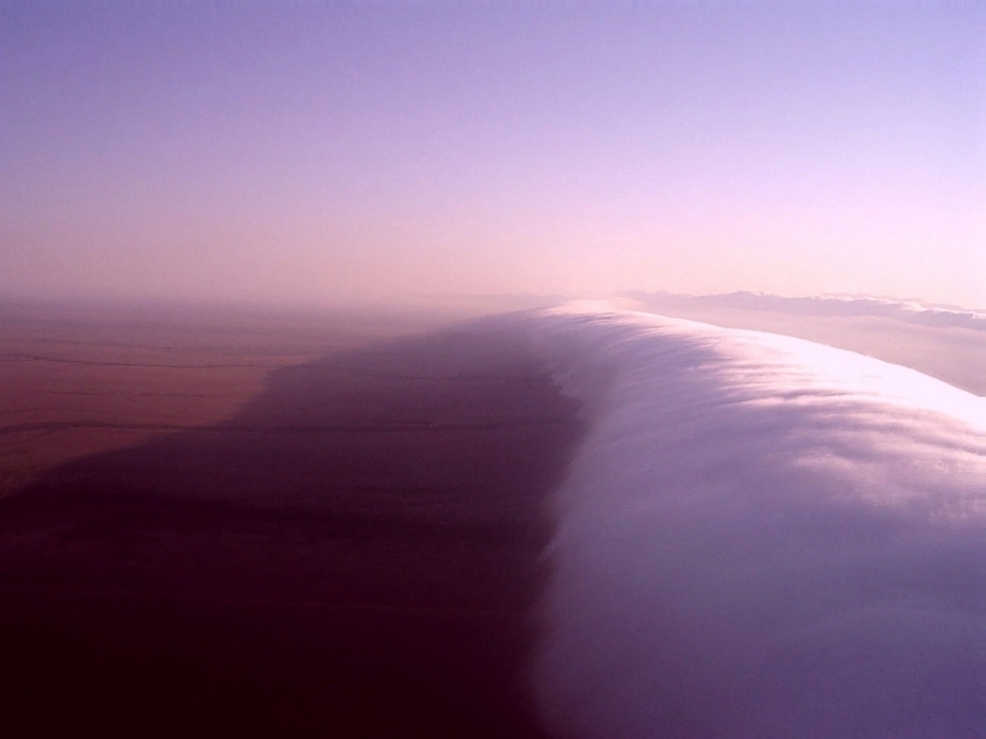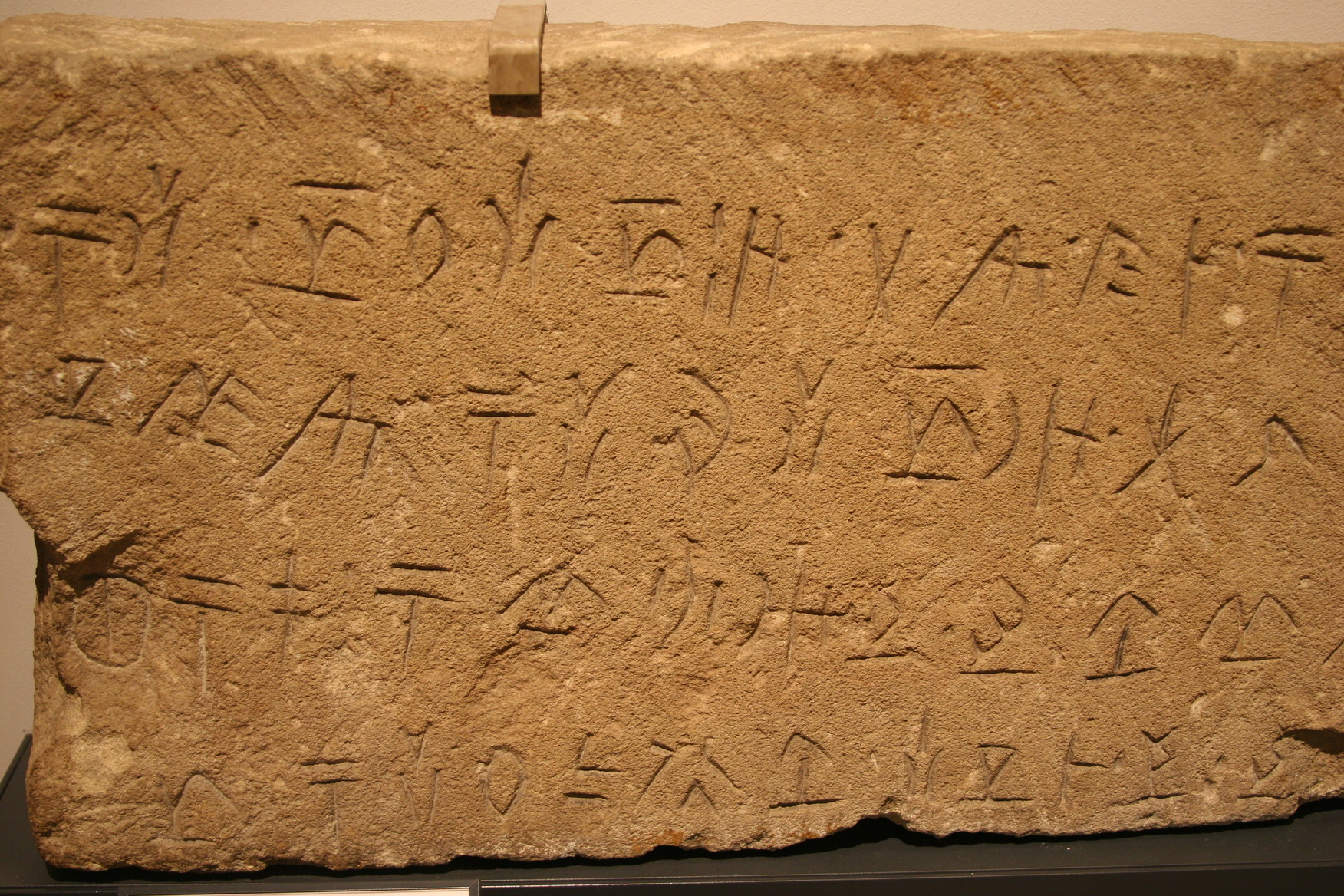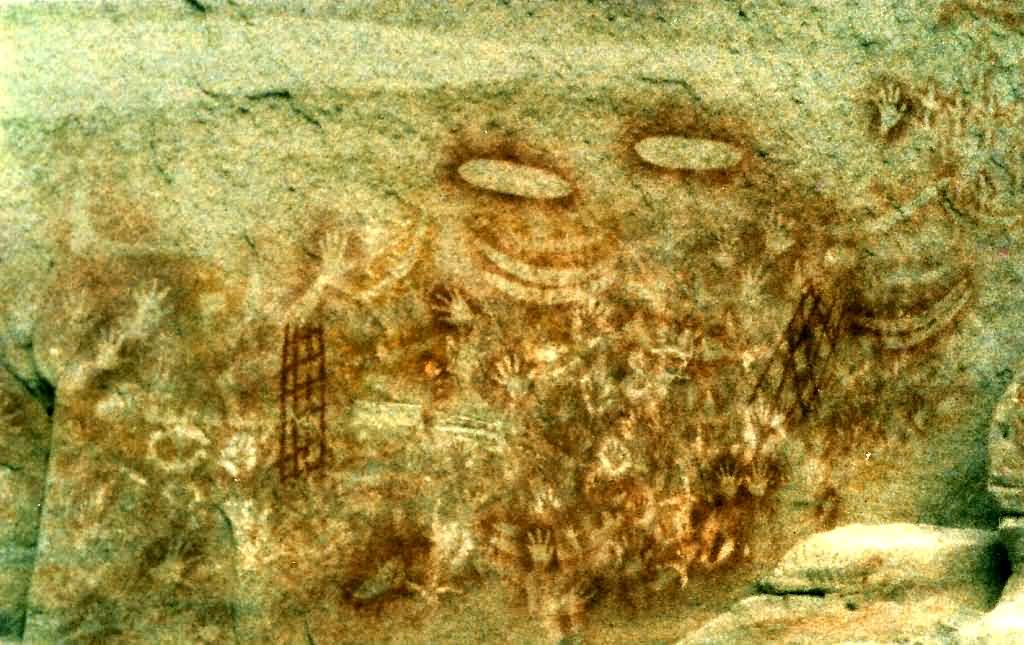|
Gangalidda
The Yukulta people, also spelt Jokula, Jukula, and other variants, and also known as Ganggalidda or Gangalidda, are an Aboriginal Australian people of the state of Queensland. They may be the same as the Yanga group. Country Norman Tindale (1974) estimated that the Yukulta had about of tribal land extending from Burketown to Hann Creek and Massacre Inlet in northern Queensland. They were also present on the coastal area to the west of Cliffdale Creek. Their inland extension was close to the Nicholson River. Their eastern frontier was on the mouth of the Albert River near Escott. Kerwin (2011) and Trigger (2015) report that the Ganggalidda traditionally lived on the southern coast of the Gulf of Carpentaria, west of :sv:Moonlight Creek. Many of their descendants now dwell in and around Mungubie (Burketown) in northern Queensland. The Garrwa people occupied land to their west, the Waanyi to their south-west, the Nguburinji to their south, and the Mingginda to the east. ... [...More Info...] [...Related Items...] OR: [Wikipedia] [Google] [Baidu] |
Burketown, Queensland
Burketown is an isolated outback town and coastal locality in the Shire of Burke, Queensland, Australia. In the , the locality of Burketown had a population of 238 people. It is located west of Cairns and west of Normanton on the Albert River and Savannah Way in the area known as the Gulf Savannah. Geography Burketown is located on the Albert River to the north west of the state capital, Brisbane, with the nearest larger town being Normanton, to the east, and the nearest city being Mount Isa, to the south. The town is roughly inland from the Gulf of Carpentaria. It is located west of Cairns via the Savannah Way passing through the area known as the Gulf Savannah. The town is the administrative centre of the Burke Shire Council. History Aboriginal History Aboriginal Australian peoples had inhabited the region for millennia before European explorers travelled the area. The Yukulta / Ganggalidda and Garawa peoples are recognised as the traditional owners of the ... [...More Info...] [...Related Items...] OR: [Wikipedia] [Google] [Baidu] |
Burketown
Burketown is an isolated outback town and coastal locality in the Shire of Burke, Queensland, Australia. In the , the locality of Burketown had a population of 238 people. It is located west of Cairns and west of Normanton on the Albert River and Savannah Way in the area known as the Gulf Savannah. Geography Burketown is located on the Albert River to the north west of the state capital, Brisbane, with the nearest larger town being Normanton, to the east, and the nearest city being Mount Isa, to the south. The town is roughly inland from the Gulf of Carpentaria. It is located west of Cairns via the Savannah Way passing through the area known as the Gulf Savannah. The town is the administrative centre of the Burke Shire Council. History Aboriginal History Aboriginal Australian peoples had inhabited the region for millennia before European explorers travelled the area. The Yukulta / Ganggalidda and Garawa peoples are recognised as the traditional owners of the ... [...More Info...] [...Related Items...] OR: [Wikipedia] [Google] [Baidu] |
Escott, Queensland
The Shire of Burke is a local government area in North West Queensland, Australia. The shire lies on the south coast of the Gulf of Carpentaria and abuts the border with the Northern Territory. It covers an area of , and has existed as a local government entity since 1885. The major town and administrative centre of the shire is Burketown. The shire and town are named in honour of ill-fated explorer Robert O'Hara Burke. The Gangalidda name for Burketown is ''Mungibi'' meaning ‘little Island’ for the fact that flooding in the wet season often isolates the town. From the months of August to November, a rare meteorological phenomenon known as "Morning Glory" – long, tubular clouds, some up to 1000 km in length – are often observed in the skies above Burke Shire. The shire contains Boodjamulla National Park (formerly called Lawn Hill National Park) and the World Heritage Site Riversleigh fossil fields. The Aboriginal Shire of Doomadgee lies inside Burke Shire to th ... [...More Info...] [...Related Items...] OR: [Wikipedia] [Google] [Baidu] |
Aboriginal Australian
Aboriginal Australians are the various Indigenous peoples of the Australian mainland and many of its islands, such as Tasmania, Fraser Island, Hinchinbrook Island, the Tiwi Islands, and Groote Eylandt, but excluding the Torres Strait Islands. The term Indigenous Australians refers to Aboriginal Australians and Torres Strait Islanders collectively. It is generally used when both groups are included in the topic being addressed. Torres Strait Islanders are ethnically and culturally distinct, despite extensive cultural exchange with some of the Aboriginal groups. The Torres Strait Islands are mostly part of Queensland but have a separate governmental status. Aboriginal Australians comprise many distinct peoples who have developed across Australia for over 50,000 years. These peoples have a broadly shared, though complex, genetic history, but only in the last 200 years have they been defined and started to self-identify as a single group. Australian Aboriginal identity has cha ... [...More Info...] [...Related Items...] OR: [Wikipedia] [Google] [Baidu] |
Mingginda
The Mingin, also known as the Mingginda, are an Aboriginal Australian people of the state of Queensland, who lived in the Gulf Country east of Moonlight Creek and the Yukulta / Ganggalidda people in the southern Gulf of Carpentaria. Language The Mingin language's affiliation has yet to be determined but is thought to have belonged to the Tangkic language family, and to have been closely related to the languages of the Wellesley Islands and in particular Yukulta spoken by the neighbouring Ganggalida. Country Norman Tindale estimated Mingin land as encompassing around , living in the savannah plains south of Burketown on the Barkly River, as east to the banks of the Leichhardt River. Their southern limits lay around Augustus Downs and Gregory Downs. Their sole contact with the coast was at the area where the Albert River drains into the Gulf of Carpentaria. Social customs The Mingin were a circumcising tribe which dropped the rite from their initiation ceremonies sometime ... [...More Info...] [...Related Items...] OR: [Wikipedia] [Google] [Baidu] |
Australian Institute Of Aboriginal And Torres Strait Islander Studies
The Australian Institute of Aboriginal and Torres Strait Islander Studies (AIATSIS), established as the Australian Institute of Aboriginal Studies (AIAS) in 1964, is an independent Australian Government statutory authority. It is a collecting, publishing and research institute and is considered to be Australia's premier resource for information about the cultures and societies of Aboriginal and Torres Strait Islander peoples. The institute is a leader in ethical research and the handling of culturally sensitive material'Aboriginal and Torres Strait Islander Library, Information and Resource Network (ATSILIRN) Protocols for Libraries, Archives and Information Services', http://atsilirn.aiatsis.gov.au/protocols.php, retrieved 12 March 2015‘'AIATSIS Collection Development Policy 2013 – 2016'’, AIATSIS website, http://aiatsis.gov.au/sites/default/files/docs/about-us/collection-development-policy.pdf, retrieved 12 March 2015 and holds in its collections many unique and irrepla ... [...More Info...] [...Related Items...] OR: [Wikipedia] [Google] [Baidu] |
Exonym
An endonym (from Greek: , 'inner' + , 'name'; also known as autonym) is a common, ''native'' name for a geographical place, group of people, individual person, language or dialect, meaning that it is used inside that particular place, group, or linguistic community in question; it is their self-designated name for themselves, their homeland, or their language. An exonym (from Greek: , 'outer' + , 'name'; also known as xenonym) is an established, ''non-native'' name for a geographical place, group of people, individual person, language or dialect, meaning that it is used only outside that particular place, group, or linguistic community. Exonyms exist not only for historico-geographical reasons but also in consideration of difficulties when pronouncing foreign words. For instance, is the endonym for the country that is also known by the exonym ''Germany'' in English, in Spanish and in French. Naming and etymology The terms ''autonym'', ''endonym'', ''exonym'' and ' ... [...More Info...] [...Related Items...] OR: [Wikipedia] [Google] [Baidu] |
Yanggal
The Yangkaal, also spelt Yanggal, are an Aboriginal Australian people of area of the Gulf of Carpentaria in the state of Queensland. Gananggalinda is a variant name of the same group.> Language The Yangkaal language was also known as Yanggaralda, Janggal, Gananggalinda, Nemarang, and other names. Geoffrey O'Grady grouped it as a variety of Yukulta within the Tangkic language family. The implication was that "Yanggal" was simply an alternative name for "Njangga", which is an alternative ethnonym for the Yanyula (Yanyuwa), from which the word Yanggal may have derived. Country The Yangkaal work over of land, both on Forsyth Island and the stretch of coastline opposite, on the mainland, running as far west as Cliffdale Creek mainland opposite. Much of the continental coastland used by the Yangkaal was mangrovial. David Horton reported in '' The Encyclopaedia of Aboriginal Australia: Aboriginal and Torres Strait Islander history, society and culture'' that the traditiona ... [...More Info...] [...Related Items...] OR: [Wikipedia] [Google] [Baidu] |
Extinct Language
An extinct language is a language that no longer has any speakers, especially if the language has no living descendants. In contrast, a dead language is one that is no longer the native language of any community, even if it is still in use, like Latin. A dormant language is a dead language that still serves as a symbol of ethnic identity to a particular group. These languages are often undergoing a process of revitalisation. Languages that currently have living native speakers are sometimes called modern languages to contrast them with dead languages, especially in educational contexts. In the modern period, languages have typically become extinct as a result of the process of cultural assimilation leading to language shift, and the gradual abandonment of a native language in favour of a foreign ''lingua franca'', largely those of European countries. As of the 2000s, a total of roughly 7,000 natively spoken languages existed worldwide. Most of these are minor languages in dang ... [...More Info...] [...Related Items...] OR: [Wikipedia] [Google] [Baidu] |
Tangkic Languages
The Tangkic languages form a small language family of Australian Aboriginal languages spoken in northern Australia. The Tangkic languages are Lardil (Leerdil) and its special register Damin, Kayardild, and Yukulta (also known as Ganggalida or Nyangga). Of these Lardil is quite divergent, while Yukulta and Kayardild are mutually intelligible. The extinct and poorly attested Minkin language may have been part of the Tangkic family. Vocabulary Capell Capell or Capel is a surname. Notable people with the name include: Capell * Arthur Capell, 1st Baron Capell of Hadham (1608–1649), English politician * Arthur Capell, 1st Earl of Essex (1631–1683), English statesman * Arthur Capell (1902–1 ... (1942) lists the following basic vocabulary items:Capell, Arthur. 1941-1942, 1942-1943Languages of Arnhem Land, North Australia ''Oceania'' 12: 364-392, 13: 24-51. : References {{language families Language families Non-Pama-Nyungan languages Indigenous Australian languag ... [...More Info...] [...Related Items...] OR: [Wikipedia] [Google] [Baidu] |
Yukulta Language
The Yukulta language, also spelt Yugulda, Yokula, Yukala, Jugula, and Jakula, and also known as Ganggalidda (Kangkalita, Ganggalida), is an extinct Tangkic language spoken in Queensland and Northern Territory, Australia. It was spoken by the Yukulta people, whose traditional lands lie on the southern coast of the Gulf of Carpentaria. Nguburinji (Ngubirindi) is regarded as a dialect of the same language, spoken by the Nguburinji people. Classification Yukulta is a member of the Tangkic language group, along with Kayardild, Lardil and Yanggal, all from the North Wellesley Islands and adjoining mainland. The languages are mutually intelligible, and ''tangka'' means "person" in all four languages). These languages were classified as Tangkic by Geoffrey O'Grady, with Carl and Flo Voegelin(1966). Nicholas Evans and Gavan Breen see Yukulta and Nguburinji as dialects of the same language. Nguburinji is known only through a word list by Walter Roth (1897), which shares 90 per c ... [...More Info...] [...Related Items...] OR: [Wikipedia] [Google] [Baidu] |
Dreamtime
The Dreaming, also referred to as Dreamtime, is a term devised by early anthropologists to refer to a religio-cultural worldview attributed to Australian Aboriginal mythology, Australian Aboriginal beliefs. It was originally used by Francis James Gillen, Francis Gillen, quickly adopted by his colleague Walter Baldwin Spencer, Baldwin Spencer and thereafter popularised by A. P. Elkin, who, however, later revised his views. The Dreaming is used to represent Aboriginal concepts of ''Everywhen'', during which the land was inhabited by ancestral figures, often of heroic proportions or with supernatural abilities. These figures were often distinct from gods, as they did not control the material world and were not worshipped but only reverence (emotion), revered. The concept of the Dreamtime has subsequently become widely adopted beyond its original Australian context and is now part of global popular culture. The term is based on a rendition of the Arandic languages, Arandic word '' ... [...More Info...] [...Related Items...] OR: [Wikipedia] [Google] [Baidu] |





